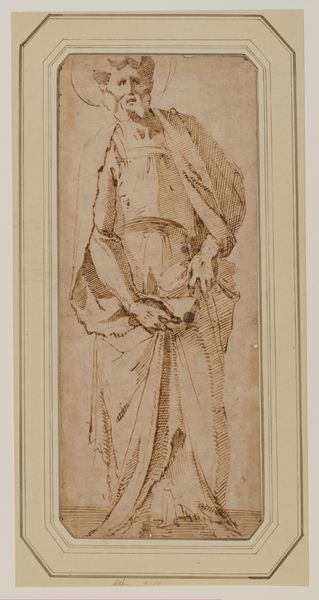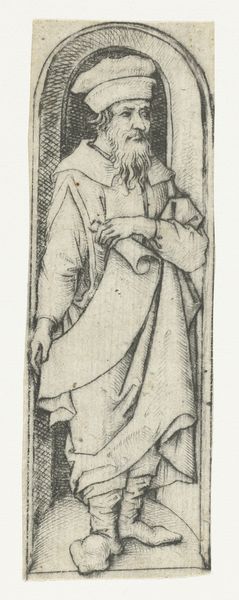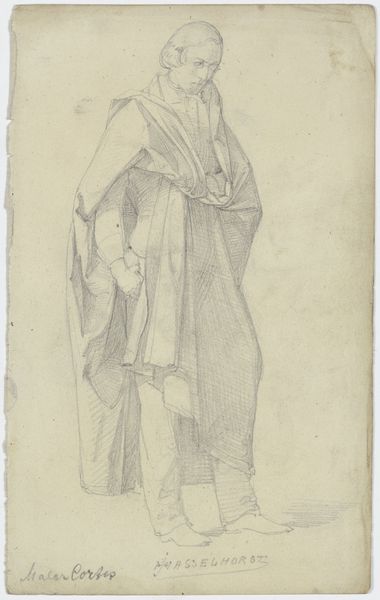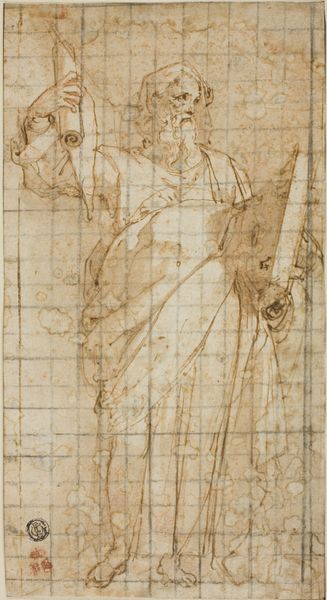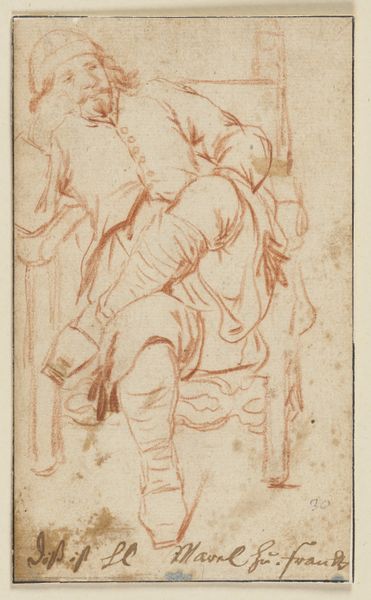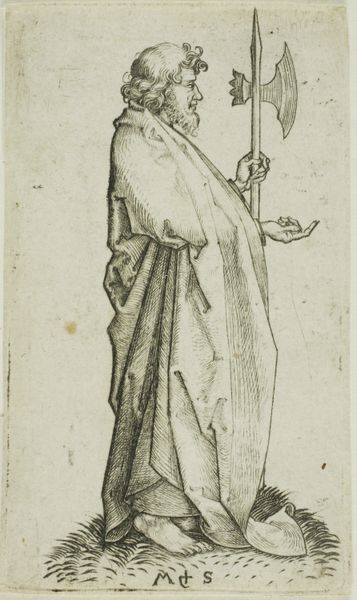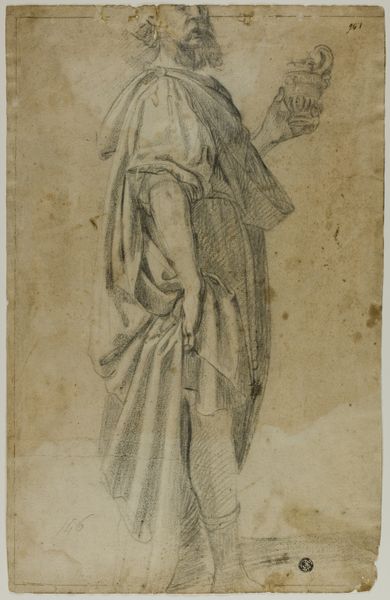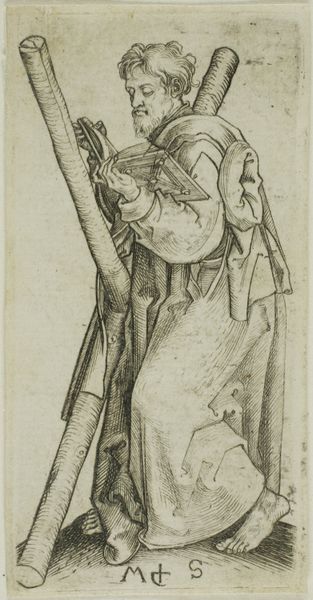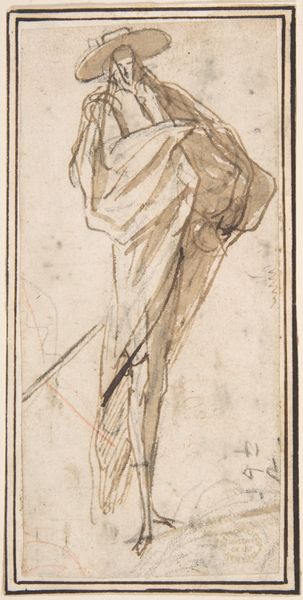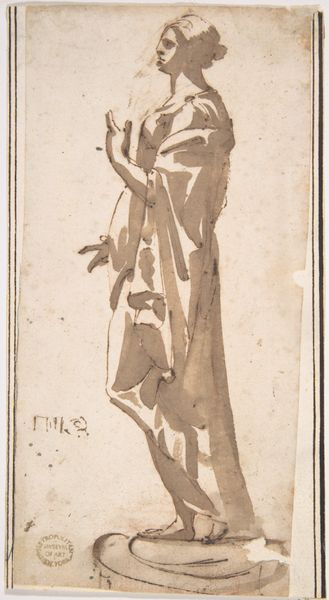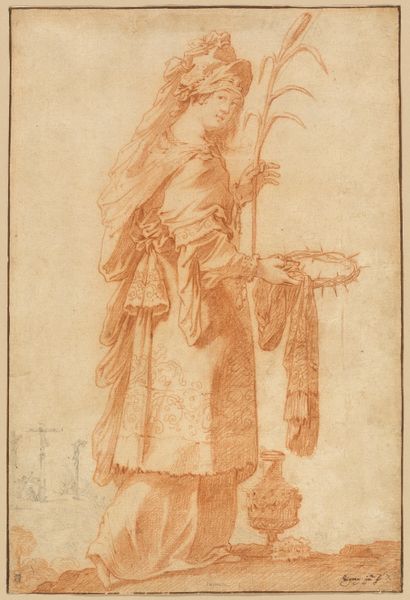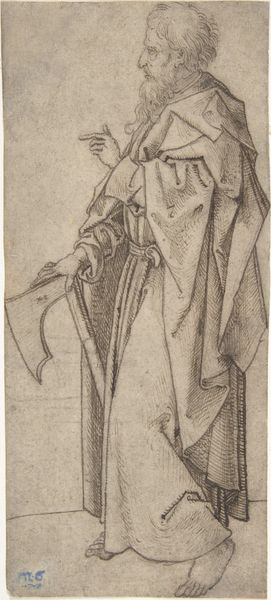
drawing, print
#
drawing
#
natural stone pattern
#
toned paper
# print
#
pencil sketch
#
charcoal drawing
#
possibly oil pastel
#
charcoal art
#
pencil drawing
#
coffee painting
#
underpainting
#
virgin-mary
#
watercolor
Dimensions: 8 3/16 x 3 1/8in. (20.8 x 7.9cm)
Copyright: Public Domain
Editor: This drawing, "The Virgin Annunciate," dates from about 1470 to 1480. It is anonymously made, but uses what appear to be graphite, pen, and ink on toned paper. It seems unusually subdued and internal, quite different from the grand depictions I've seen of this scene. How do you interpret this work? Curator: It's a compelling piece, isn't it? Consider the social expectations placed upon women during the Renaissance. The Virgin Annunciate was more than just a religious icon; she was the embodiment of idealized femininity: purity, obedience, and humility. This work subverts the traditional fanfare associated with the Annunciation. Instead, we have a quiet moment of contemplation, of personal reflection, captured on paper. Notice how the artist used simple materials and understated composition to center the subject’s interiority. What does the averted gaze suggest to you? Editor: Perhaps the subject isn't just accepting her fate passively, but actually contemplating the enormity—the burden, even—of it? The artist is portraying her in a moment of genuine consideration. Curator: Precisely. And, this interpretation moves beyond conventional readings of the Annunciation, offering a glimpse into the Virgin's agency, even within the constraints of her religious and social role. Editor: So, instead of only reflecting religious dogma, the artist could be exploring the complexities of female experience, challenging the very narratives expected of women during that time? Curator: Absolutely. It allows us to see the Virgin Mary not just as a symbol, but as an individual grappling with profound change, making the scene deeply resonant. Editor: I never considered how art from the Renaissance might reflect individual challenges. This reframes my perspective. Curator: Art constantly converses with social issues, and it’s our responsibility to bring them to light, even with historical artwork like this one.
Comments
No comments
Be the first to comment and join the conversation on the ultimate creative platform.
